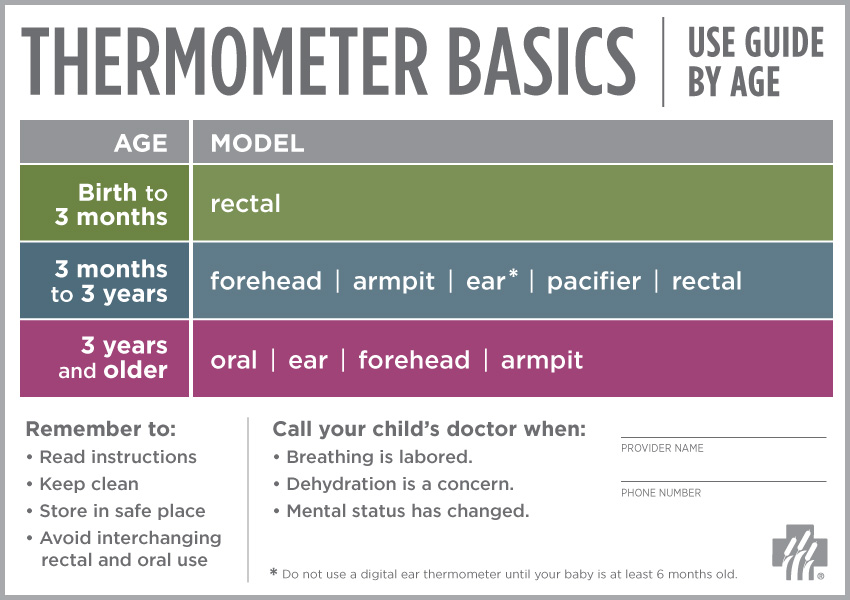When children are sick, one of the first things you check is whether they have a fever. Although it’s common to feel the forehead or back of the neck to gauge fevers, this method isn’t particularly accurate. The best thermometer to use when you suspect your child is feverish is an age-appropriate one.

Today most thermometers use digital or infrared technology and are available as armpit, ear, forehead (temporal), oral or rectal models. To protect families from exposure should the thermometer break, mercury thermometer use is discouraged.
Your thermometer choice largely depends on your child’s age. Rectal thermometers are most accurate and recommended for children up to three months. Armpit temperatures typically are the least accurate.
Fever shouldn’t be the only concern
“Getting the most accurate temperature reading for young children is important because the height of their body temperature is more critical than it is for adults,” said Dr. David Holz, a Marshfield Clinic pediatrician. “But fever alone, whether high or low, isn’t the only indicator of how sick a child may be. In some cases, the fever may be the least worrisome symptom.”
Difficulty with breathing, unable to take fluid, dehydration, as well as showing a change in mental status such as confusion or unusual sleepiness, are causes for concern.
“Though significantly elevated temperatures can suggest the potential for a more serious infection, this isn’t always the case and should not be the only means of measuring the degree of a child’s illness,” Dr. Holz said.
Safe thermometer use
Household thermometers can be important tools for keeping your family well. They work best when you:
- Read instructions before using
- Follow the manufacturer’s method for keeping clean
- Store in a safe place
- Avoid using rectal and oral models interchangeably
Keep your thermometer handy at home and when you’re mobile. Be prepared for everything with your on-the-go med pack.
Download this thermometer basics graphic

For help choosing the best thermometer, talk to a Marshfield Children’s provider.
Schedule appointment Message your provider
Related Shine365 articles
Cough, shortness of breath: Difficulty breathing when sick






Leave a Reply